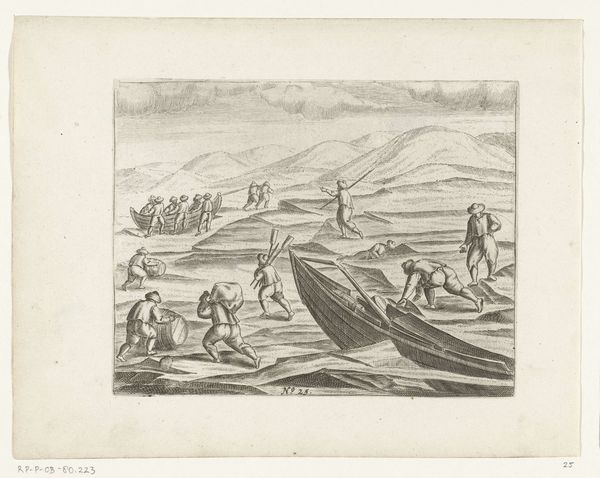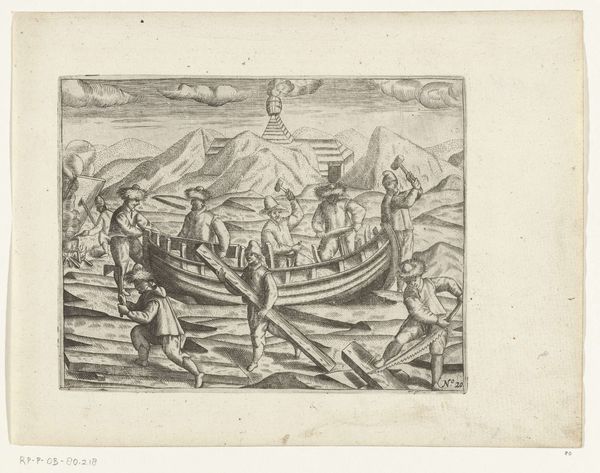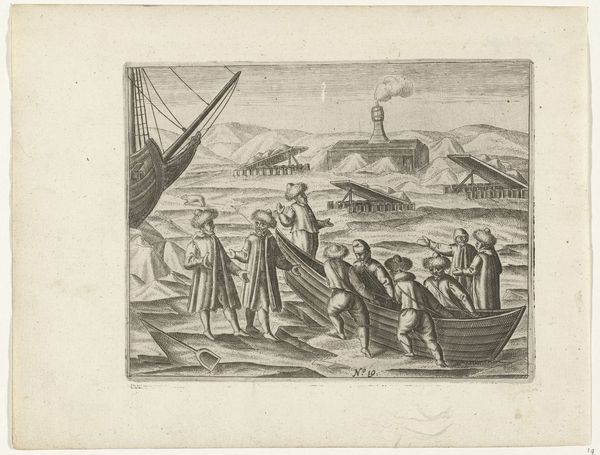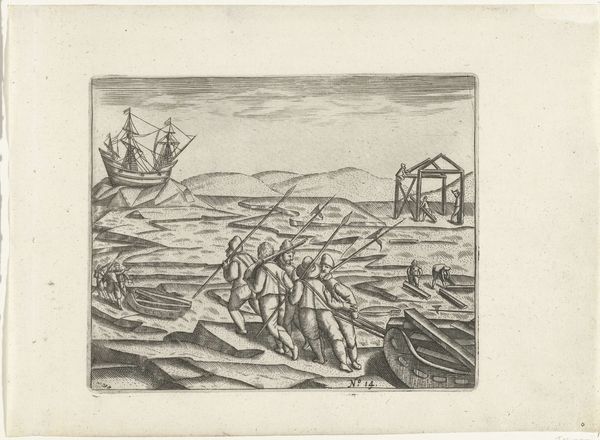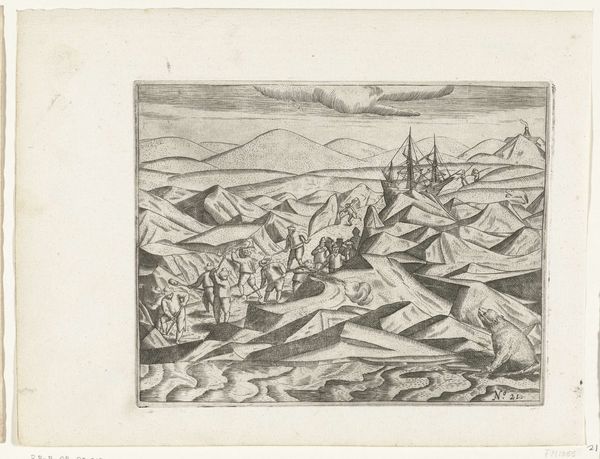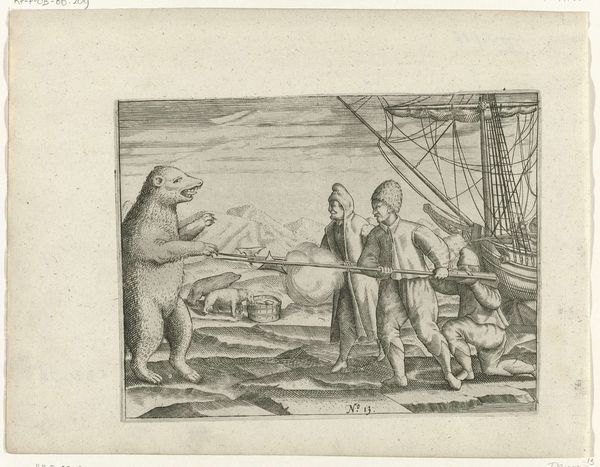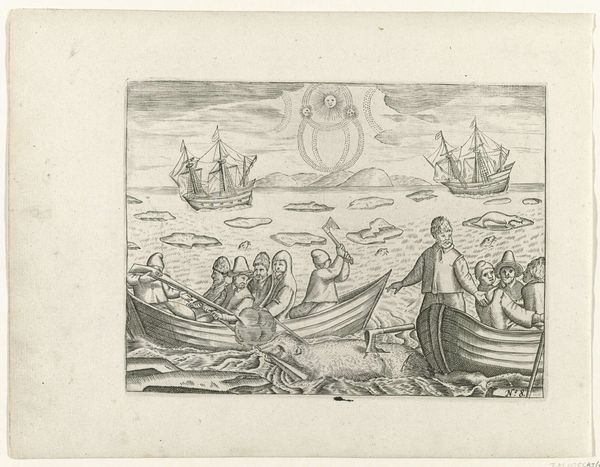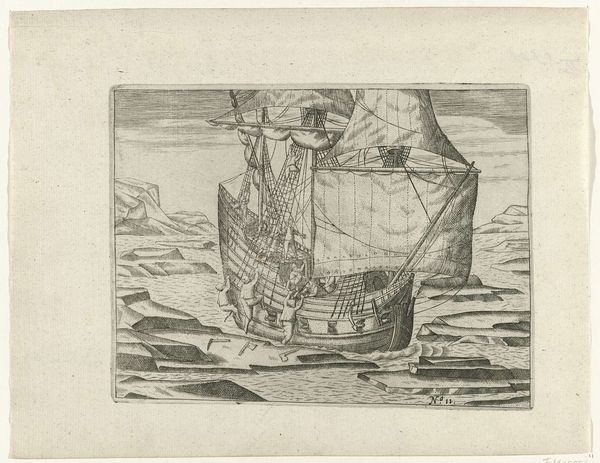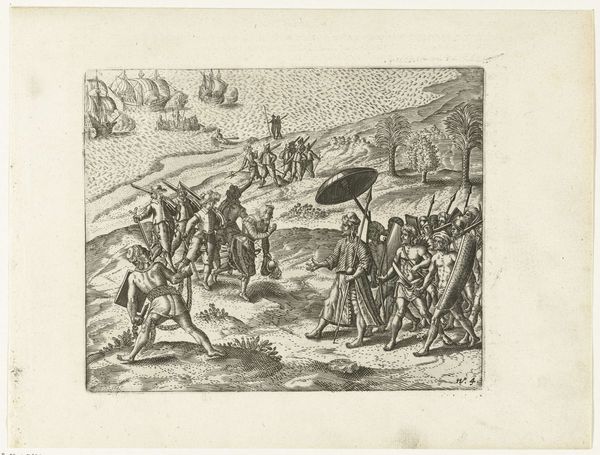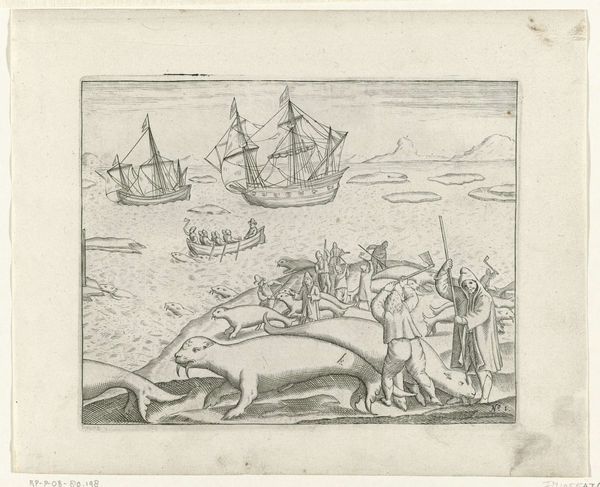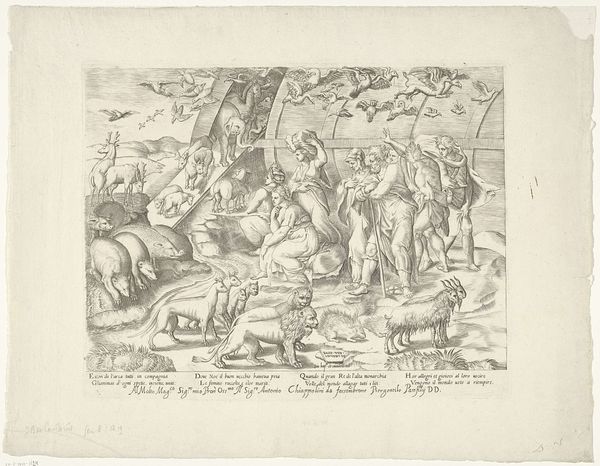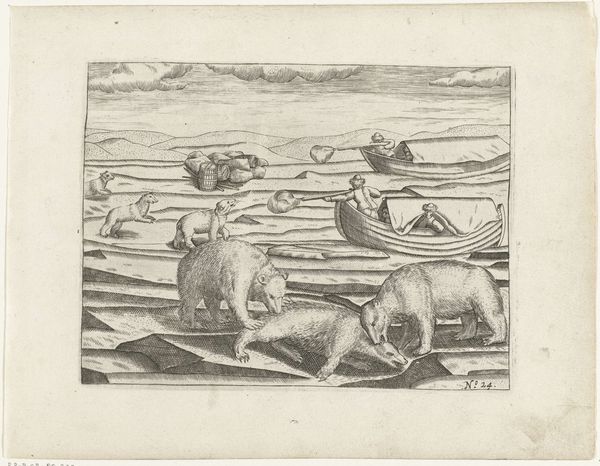
print, engraving
#
narrative-art
#
baroque
# print
#
landscape
#
figuration
#
history-painting
#
engraving
Dimensions: height 139 mm, width 179 mm
Copyright: Rijks Museum: Open Domain
Curator: Today we're looking at an engraving from the early 17th century titled, "Overvallen door ijsberen bij het laden van de sleden, 1596," attributed to an anonymous artist, currently held in the Rijksmuseum collection. Editor: It's incredibly dramatic, almost theatrical. The scene seems chaotic and frantic. The icy landscape, though rendered simply, feels vast and perilous. You can almost feel the biting wind just looking at it. Curator: This piece captures a historical moment during Willem Barentsz's third voyage to the Arctic. What it depicts is more than a simple event; it illustrates the fraught relationship between humans and the natural world during the Age of Exploration. We must consider how depictions of the "untamed" Arctic landscapes perpetuated specific power dynamics of colonisation. Editor: Absolutely. It's interesting to think about how these kinds of images were consumed back then. This print isn't just showing an encounter, it's shaping a narrative, perhaps even fueling a colonial agenda. The vulnerable position of the men contrasts sharply with the implied dominance Europeans sought over newly "discovered" lands. What does this violent disruption, captured by the artist, convey about nature's revolt against outsiders? Curator: It does highlight the element of risk inherent in such expeditions, of course. In the cultural imagination of the time, the Arctic was terra incognita—a place both fearsome and full of promise. The attack by polar bears disrupts any sense of orderly enterprise. Notice how the ship looms so largely, dominating the background; it symbolises ambition, but the foreground exposes its vulnerability to an unpredictable environment. Editor: It forces us to question whose story is prioritised. Where are the indigenous voices? They're erased entirely, as if this encounter occurs in a void. Instead, what we see are the human figures as perceived victims or intruders, reinforcing their perceived superiority over nature and native populations alike. What can that type of visual paradigm tell us about their cultural perception and sense of entitlement at that time? Curator: Thinking about the print's legacy, such images likely shaped public opinion and helped justify the often brutal actions of early explorers. What’s fascinating is considering it today; what resonances and dissonances does it create now given current climate concerns? Editor: Absolutely. Viewing this piece today evokes a deep unease. It compels us to reconsider our own relationship to the planet. This scene might resonate differently in the Anthropocene, making it an emblem not of triumphant exploration, but a reminder of humanity's fraught, and often destructive, interactions with the natural world. It forces you to question: who are the real aggressors in this story?
Comments
No comments
Be the first to comment and join the conversation on the ultimate creative platform.
